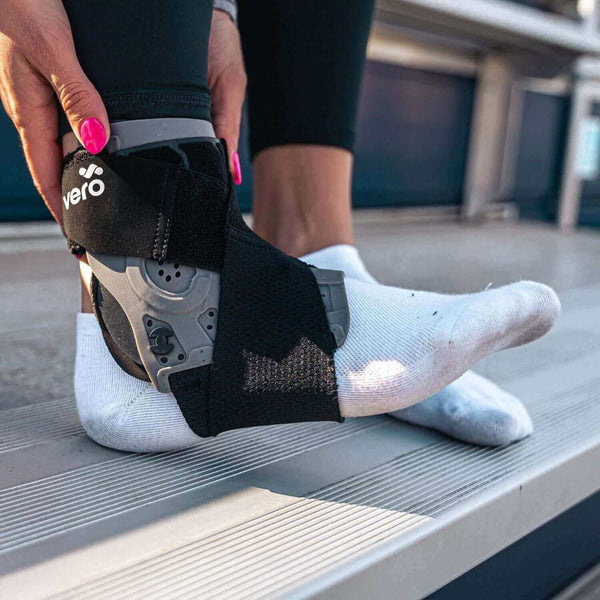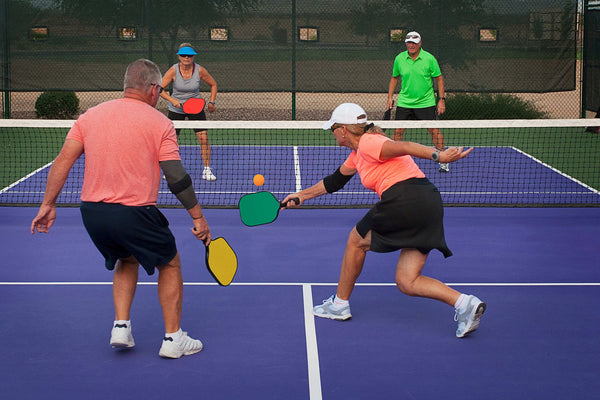Wondering about the benefit of our Vero Ankle® brace versus regular Ankle Taping? Read on for a test we had conducted.
INTRODUCTION: Ankle bracing is used to treat injuries of the ankle and the hindfoot. They are also used prophylactically used to prevent these injuries. Current bracing falls into one of three categories: Rigid, Semi-Rigid, and Elastic Socks. Each of these types of bracing has perceived advantages. The rigid brace will prevent motion, however, the limb will have to accommodate the lack of ankle function. The semi-rigid brace may be hinged to allow some movement. The elastic sleeve, while comfortable provides no resistance to movement. Taping is considered the gold standard but requires someone skilled in the application and has been shown to lose support with 10 -15 minutes of use. A new brace has been developed to combine the essential features of current braces and also be dynamic. The nature of elastomers is to return to a pre-tensioned shape when deformed. It will function as a biomimetic – normal joint anatomy will allow for motion within a range.
BACKGROUND: Ankle sprains are a common injury among both athletes and the general population. Long-term consequences of this injury can arise if not addressed appropriately, leading to decreased physical activity over time. External support systems (bracing, tape, orthoses) have been proven to be effective in the treatment of ankle sprains, but there is concern that they may impede athletic performance.
PURPOSE: To compare outcomes of three tests of functional performance and postural stability under three conditions (shod, brace, tape) in young, healthy males.
METHODS: Twelve males (24.1 ± 1.6 years; 177.3 ± 4.8 cm; 72.7 ± 4.8 kg) voluntarily participated in this research study. All testing was performed during a single test session. Testing began with each subject completing the triple crossover hop, dynamic postural stability assessment, and static postural stability (eyes open and eyes closed) testing based on previously established protocols in their shoe and sock (shod condition). The order of conditions following the shod condition was then systematically varied so that six subjects started with the Vero Ankle® brace condition and six subjects started with the tape condition. There was a mandatory ten-minute rest period between the tape and Vero Ankle® brace conditions in which subjects were asked to fill out a survey regarding the subjective fit and comfort of the Vero Ankle® brace and tape. The order of assessments within each condition was also systematically varied. The ankle tape was applied by a certified professional athletic trainer.
The Vero Ankle® brace was a brace composed mainly of a rubberized material. It covered the foot from the metatarsophalangeal joints to above the malleolus with an opening for the heel. The Vero Ankle® brace was worn over the sock and could be tightened via two Velcro straps above the malleolus. A one-way ANOVA was calculated to analyze differences between the shod, Vero Ankle® brace, and tape conditions for each of the lab tests. The Wilcoxon signed rank test was utilized to analyze the results of the survey.
RESULTS: No statistically significant difference was found in the three tests of functional performance and postural stability across any of the conditions. However, the results of the survey demonstrated that the tape limited the ankle range of motion significantly more than the Vero Ankle® brace (p<0.05). No other statistically significant differences were found between the subjective fit and comfort of the Vero Ankle® brace and tape.
CONCLUSION: Vero Ankle® brace bracing was not found to harm performance in the triple hop crossover, dynamic postural stability, or static postural stability tests. After an ankle sprain, a Vero Ankle® brace can be used without hindering athletic performance.





















